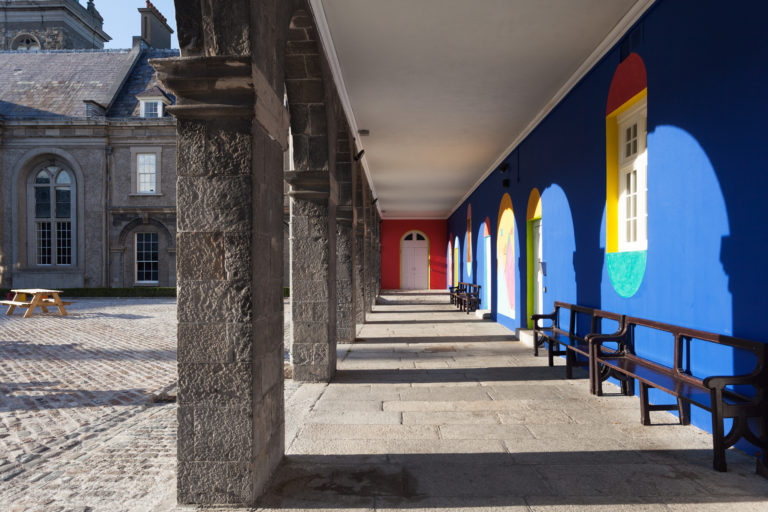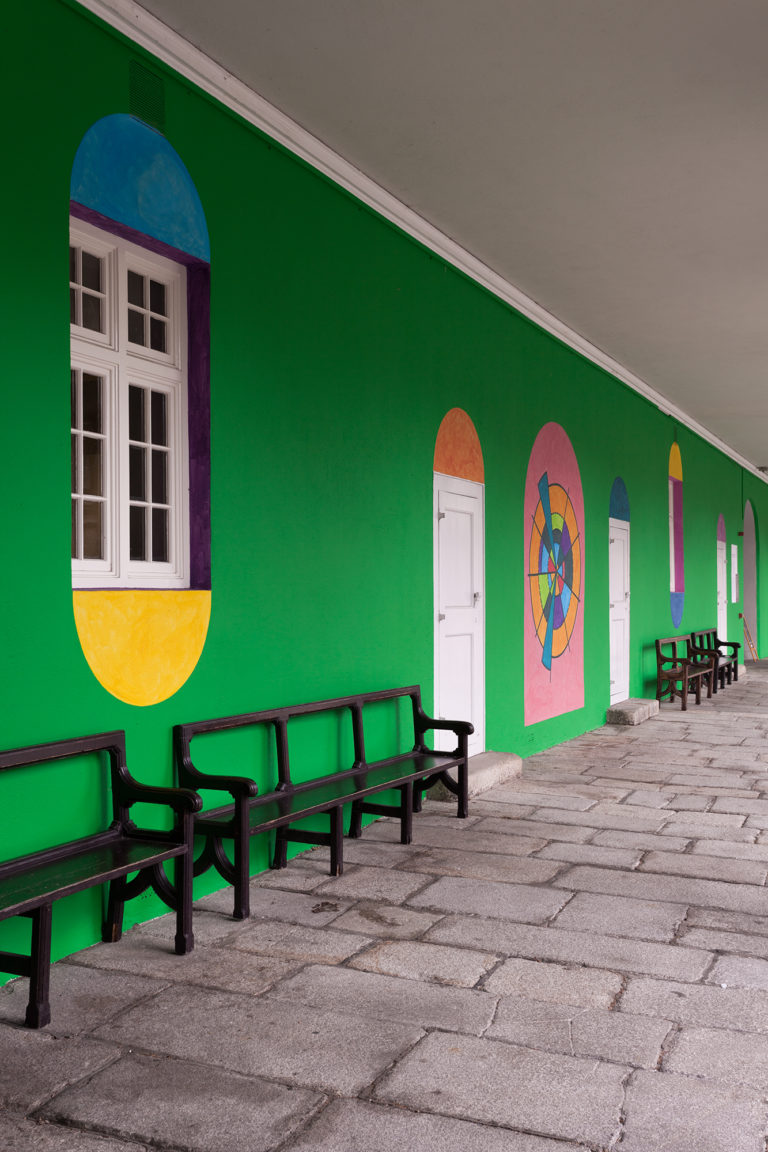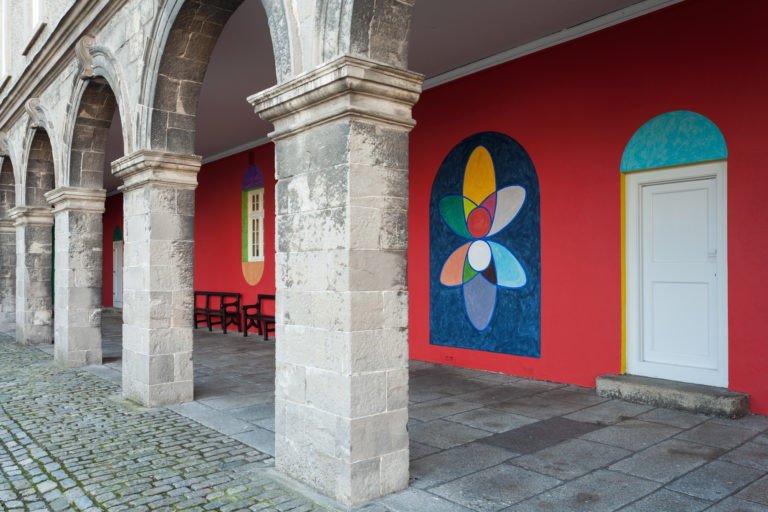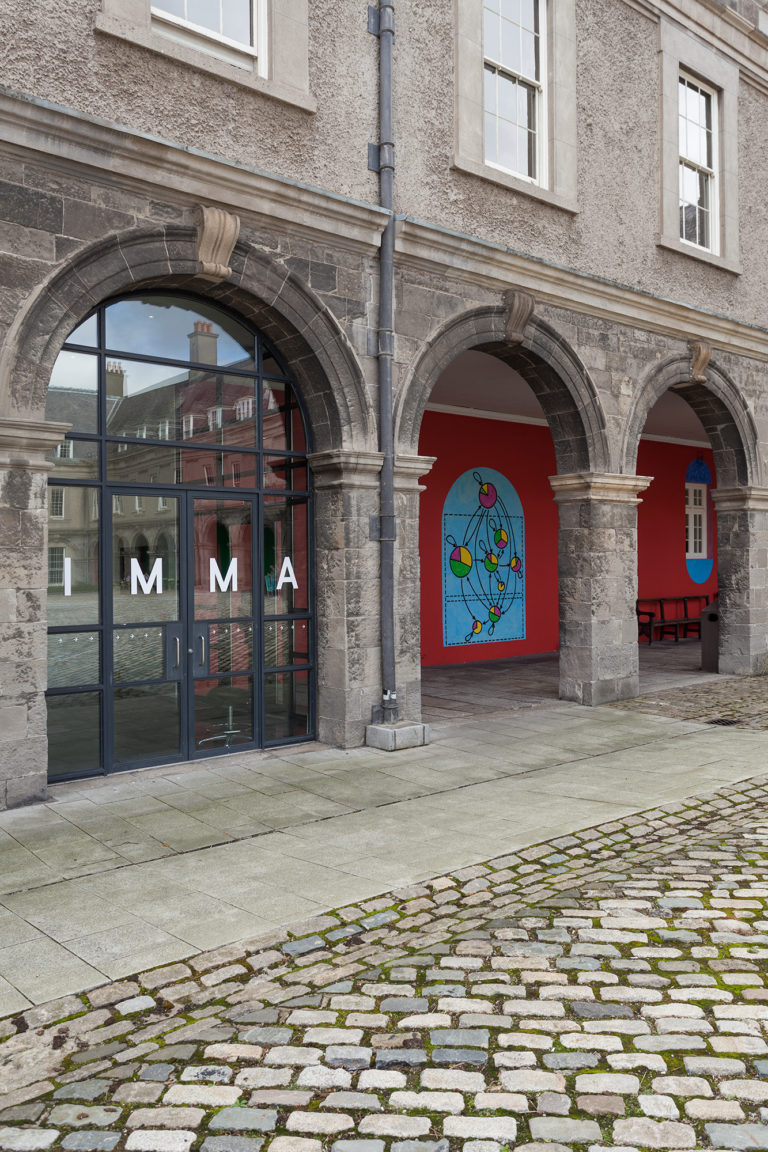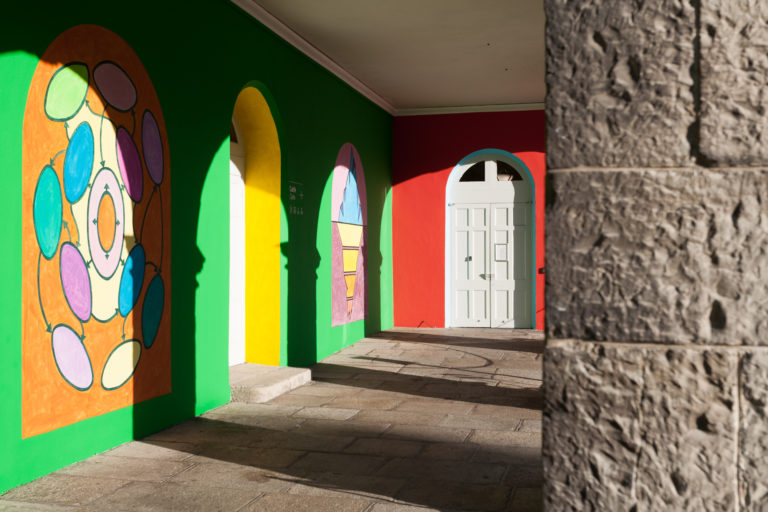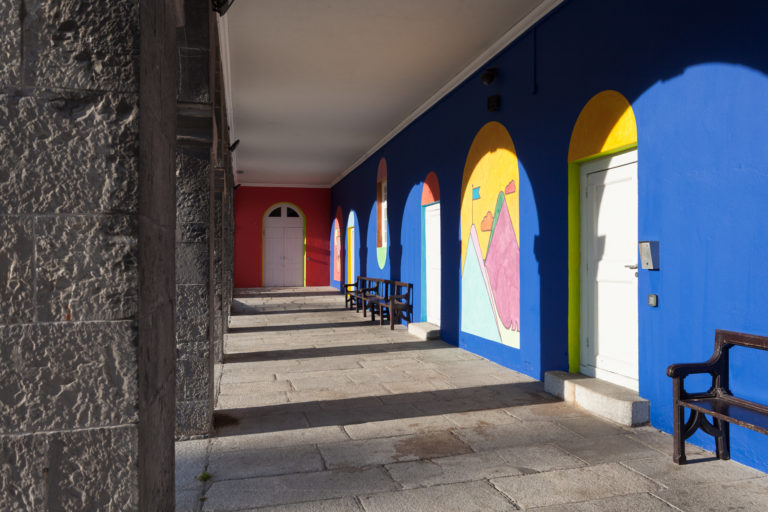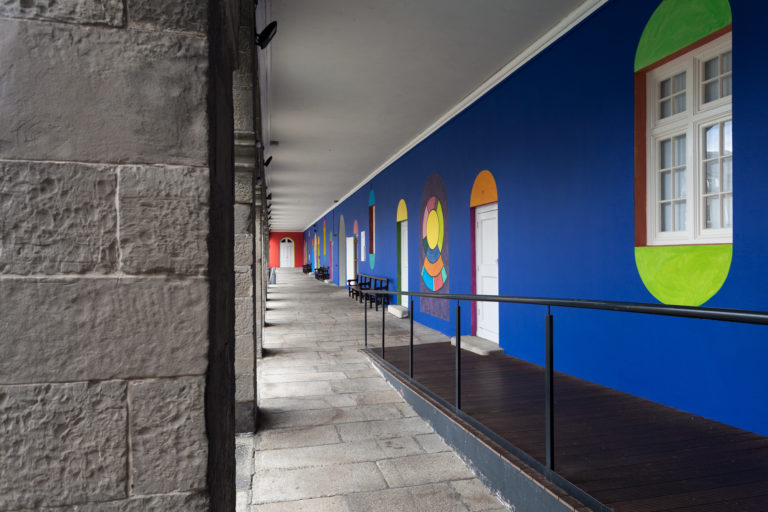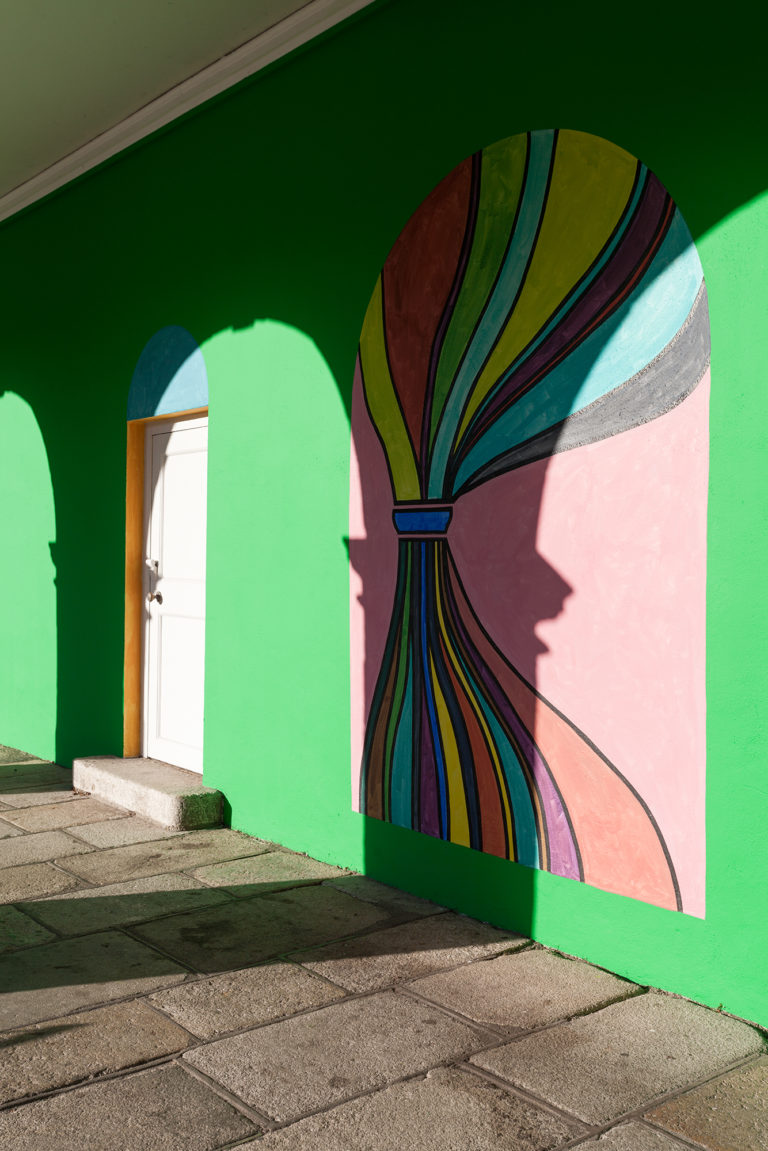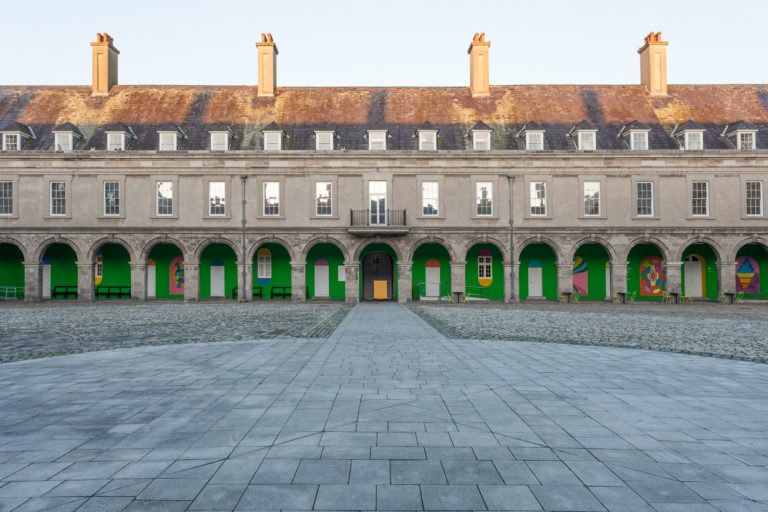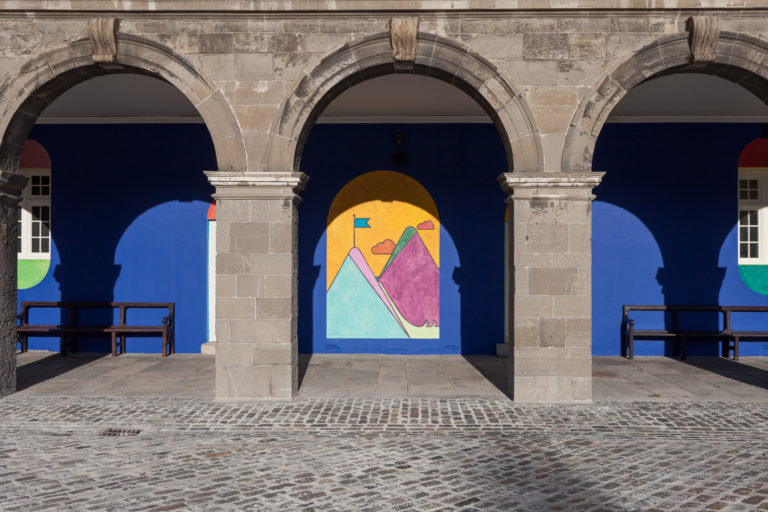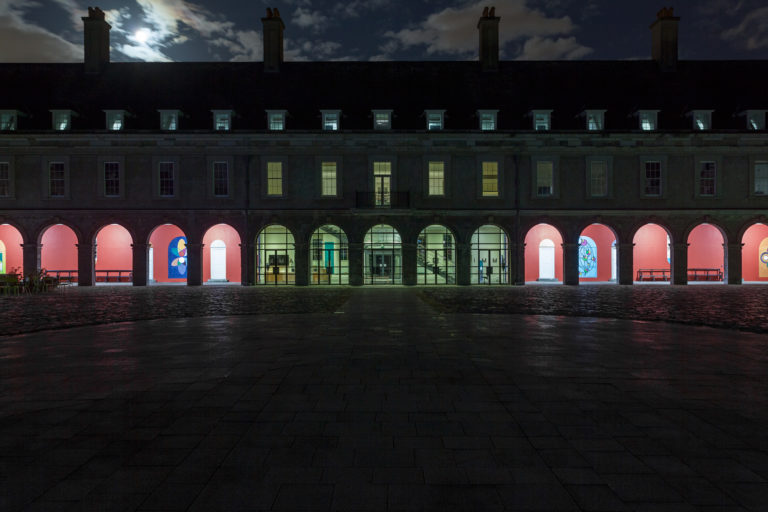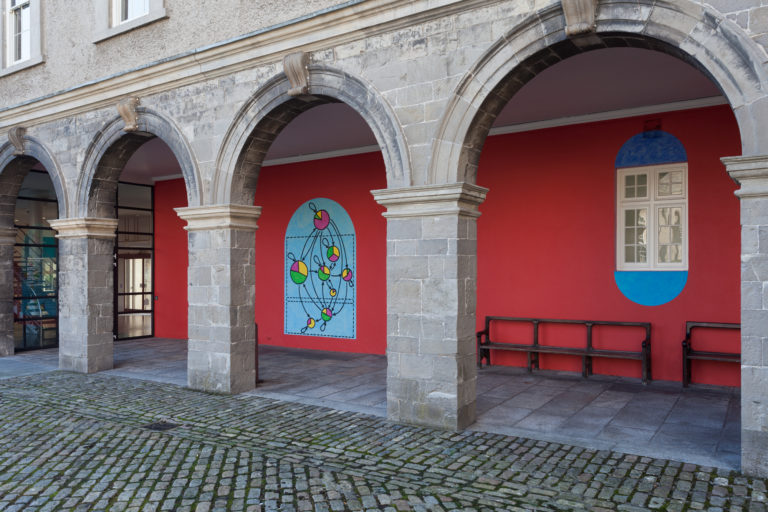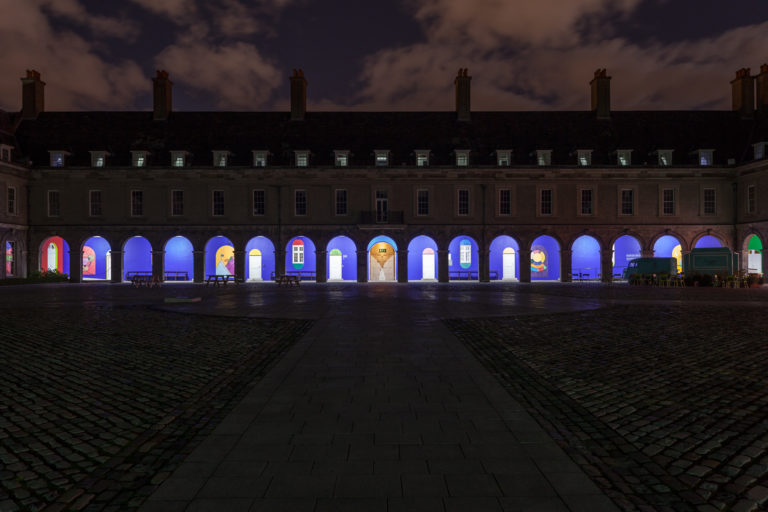IMMA invited the artist Navine G. Dossos to realise an ambitious new commission for IMMA’s iconic courtyard, titled Kind Words Can Never Die, the work explores new psychological states that have emerged in response to a greater awareness of global and local climate change. Inspired by the books Earth Emotions (2019) by Glenn Albrecht, and Thought Forms (1901) by Annie Besant and C.W. Leadbeater, these wall paintings designed through a series of workshops at IMMA, explore how we can use colour to express emotional states, and make images of these complex feelings that can be both negative and positive responses to ecological change.
One of the major issues of addressing climate change is how we visually represent it. We rely heavily on photographs to evidence the drama of ecological degradation, but also on data-driven charts, informational diagrams and other schematic representations to describe something that is almost intangible in our everyday lives. However, these issues also weigh on us psychologically, and our mental health influences the nature of our response. Kind Words Can Never Die aims to bring together our internal and external worlds, to create a new way to think about the intimate effects of climate change, and to shift our relationship to the planet.
